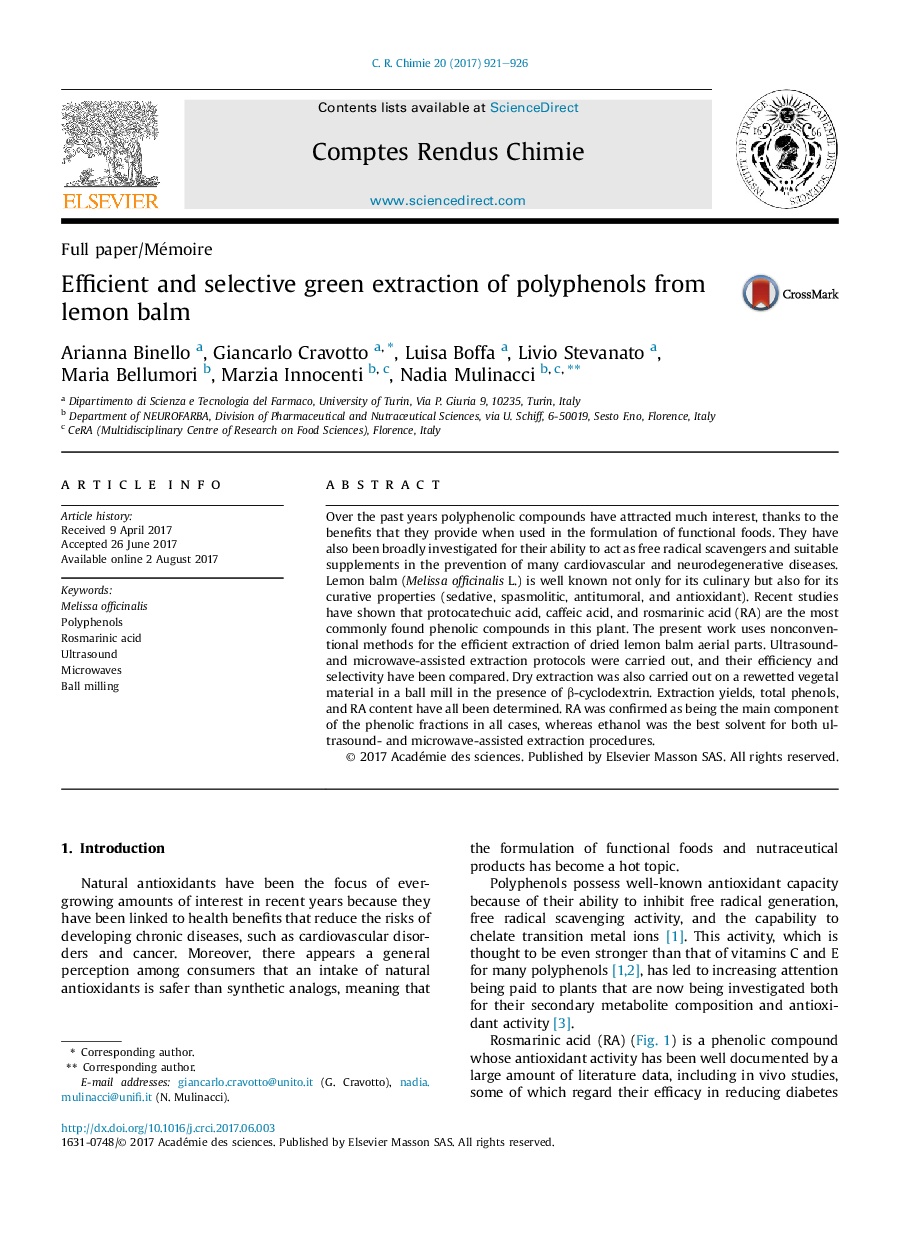| Article ID | Journal | Published Year | Pages | File Type |
|---|---|---|---|---|
| 6468612 | Comptes Rendus Chimie | 2017 | 6 Pages |
Over the past years polyphenolic compounds have attracted much interest, thanks to the benefits that they provide when used in the formulation of functional foods. They have also been broadly investigated for their ability to act as free radical scavengers and suitable supplements in the prevention of many cardiovascular and neurodegenerative diseases. Lemon balm (Melissa officinalis L.) is well known not only for its culinary but also for its curative properties (sedative, spasmolitic, antitumoral, and antioxidant). Recent studies have shown that protocatechuic acid, caffeic acid, and rosmarinic acid (RA) are the most commonly found phenolic compounds in this plant. The present work uses nonconventional methods for the efficient extraction of dried lemon balm aerial parts. Ultrasound- and microwave-assisted extraction protocols were carried out, and their efficiency and selectivity have been compared. Dry extraction was also carried out on a rewetted vegetal material in a ball mill in the presence of β-cyclodextrin. Extraction yields, total phenols, and RA content have all been determined. RA was confirmed as being the main component of the phenolic fractions in all cases, whereas ethanol was the best solvent for both ultrasound- and microwave-assisted extraction procedures.
